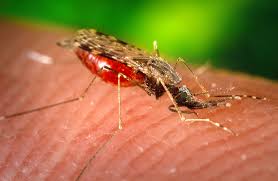Scientists Get Tools to Limit DBD Mosquito Growth To Save the World
The University of California has successfully applied CRISPR-Cas9, a powerful tool to alter DNA sequences and modify gene function, to reduce mosquito body size.
Today there are 23 people in East Nusa Tenggara (NTT) who died from dengue fever (DBD). The East Nusa Tenggara Provincial Health Office recorded the number from January 1, 2019 to Monday (1/28/2019).
DBD is a disease caused by mosquito bites. The appearance of mosquitoes that spread the DBD virus depends heavily on the environment. In some areas of Indonesia, including NTT in the rainy season, mosquitoes are more likely to breed quickly.
Actually to prevent the spread of the virus and the appearance of these mosquitoes scientists have found several steps. In order to reproduce and become an effective carrier of disease, mosquitoes should be the most important first to reach body size and have maximum nutrition.
Therefore, researchers from the University of California have successfully used CRISPR-Cas9, a powerful tool to alter DNA sequences and modify gene function, to reduce mosquito body size.
The researchers managed to delay the development of mosquitoes, shorten lifespan, slow the development of egg, and reduce the accumulation of fat in these animals. Alexander Raikhel and Lin Ling, authors of the study used CRISPR-Cas9 to disrupt serotonin receptor Aa5HT2B in Aedes aegypti mosquitoes, dengue fever vectors, yellow fever, and zika virus.
"Aa5HT2B controls peptides such as insulin. We are able to uncover the different role these peptides play in limiting the size and metabolism of the body, and disrupting the genes associated with these receptors," Raikhel said.
Rakhel and Ling reveal key molecular pathways that determine the size and metabolism of the mosquito's body. "Small mosquitoes with reduced fat power mature later and live shorter than un modified mosquitoes.
Thus, these genetically engineered mosquitoes have low reproductive capacity and the ability to transmit disease pathogens. These crisr-cas9 mutant mosquito traits can be exploited to develop new mosquito control approaches," Rakhel added.
In August 2018, scientists presented their research at the 256th National Meeting and Exhibition of the American Chemical Society (ACS). The researchers found natural compounds that were precisely targeted in repelling mosquitoes with potentially fewer environmental side effects than previous repellents.
"Our new repellent is based on how nature has become. Like, lemongrass, a spatial exterminator derived from lemongrass, contains natural essential oils that have been used for centuries to repel mosquitoes. But the lemongrass is not long-lasting and easy to destroy.
Our new generation spatial antidote is a type of natural product that is old-made and has greater repel power," said Joel R. Coats, who was involved in the research. Coats and two graduate students James S. Klimavicz and Caleb L. Corona at Iowa State University in Ames have synthesized and tested hundreds of compounds against mosquitoes.
They know that sesquiterpenoids, which are found in many plants, are targeted insect repellents, but these large molecules are difficult to isolated from plants and difficult to make and purify in the lab. Because of the challenge of synthesizing seskuiterpenoids, coats' team designed the repellent using smaller, more complicated, and easy-to-obtain molecules, monoterpenoids and phenylpropanoid alcohol with a known short-term repellent to insects.
By chemically modifying these compounds, they produce new potential repellents with higher molecular loads, making them less volatile and long-larger. With this method, the researchers tested their compounds with Aedes aegypti, a yellow fever mosquito that is also known to transmit the Zika virus and dengue fever as well as Anopheles gambiae, which transmits malaria.
"We think our penpene-based repellent mechanism, which tries to follow what nature does, is different from pyrethroids, which many mosquito species become resistant to. We believe that this 'next-gen' spatial repellent is a new tool that can provide additional protection against mosquitoes in grounds, parks, campgrounds, stables, and livestock facilities. The next step is to better understand how repellents biologically affect mosquitoes," Coats said as reported by Scienccedaily.

Comments
Post a Comment